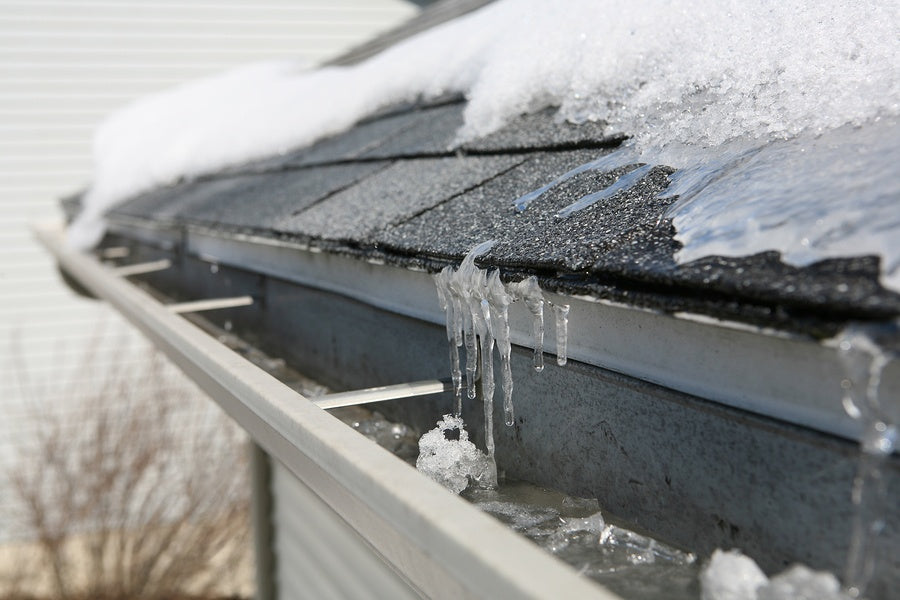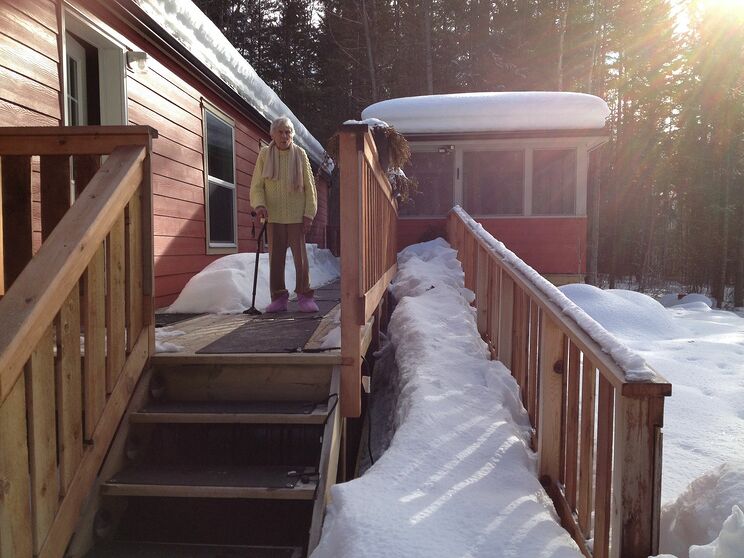Rooftop ice dams are a recurrent winter problem throughout more northerly parts of the United States, and yet, they can often be prevented (or at least minimized) by means of a few relatively inexpensive home upgrades. And even in cases where a more substantial investment is needed to guard against ice damming, the expense will easily pay for itself by preventing even more costly repairs.
How Do Ice Dams Form?
It is natural to think that, when ice is forming on your roof, it is a result of the roof getting too cold, but that is only partly true. In reality, ice dams form because hot air seeps up through your attic floor, up to the attic ceiling, and then warms your roof from below. Meanwhile, sub-freezing weather keeps the outer edges of your roof much colder than its center.
When snow covers a roof with this kind of temperature disparity, the snow over your living space will melt and run down to the overhangs, where it refreezes as either an ice dam or icicles.
What Damage Can Ice Dams Do?
Once the ice dam grows large enough to block water behind it, you have a "puddle" on your roof that will weaken the shingles/roof decking via a frequent freeze/thaw cycle. Water can also be pushed up as far as 5 to 10 feet (1.5 to 3 meters) underneath shingles, greatly increasing the chances of leakage.
Roof leaks caused by ice dams cost homeowners and insurers millions of dollars every year. Water damages roofing, underlayment, plywood roof decking, and fascia boards. It also infiltrates homes and damages drywall ceilings and walls, perimeters of windows and doors, hardwood flooring, attic insulation, and more.
Once you have an ice dam, it may be necessary to hire professional contractors to steam-melt the ice off the shingles. (Attempting to do it with an ice pick/other sharp-ended tool can damage shingles.) And you will also need to both repair any damage already done by roof leaks and locate/eliminate leak entry points.
How to Prevent Ice Dams on Your Roof
The number one way to prevent roof ice dams is to keep your roof cold. Even before an ice dam or icicles have formed, you can tell your roof is too warm if you see gaps where snow quickly melted after a heavy snowfall, instead of a solid layer of snow over the roof.
To cool down you roof, locate and caulk or otherwise block off air leaks letting hot air into your attic through the attic floor. Especially look for air leaks around pipes, chimneys, lights, and other fixtures. Then add extra insulation if your current insulation is incomplete or is less than 12 inches (30.4 cm) deep. Finally, increase attic ventilation so hot air can escape without warming the roof and so cold outdoor air can easily get in. There should be about a square foot (0.09 m2) of vent space for every 300 square feet (27.8 m2) of attic floor space. Vents should be concentrated along the overhangs and at the roof peak, and a ventilation fan at each end of the attic can keep air moving through.
Besides cooling down your roof, other ways to prevent ice dams include using a snow rake to scrape snow off your eaves after heavy snows. You have to be careful not to break singles, since they can become brittle in extremely cold temperatures, and you can only clear off one-story-high roof lines. Nevertheless, snow rakes are an inexpensive and often-effective, if tedious, way to prevent ice dams.
Another strategy is to install an ice and water barrier underneath your shingles along the roof edges. The material is self-adhesive and should run three to six feet (approx. 1 to 2 meters) up the roof for best results. The barrier will effectively waterproof the very area of your roof where ice dams are prone to form. This is an easy fix if you are putting on a new roof anyway, though it is more costly otherwise.
One final solution that can eliminate ice dams in roof valleys and other places where they stubbornly form every year is to install snow/ice melting heat cables. You can also zig-zag them along the eaves. It will be necessary to re-route water run-off to prevent refreezing elsewhere on your roof, and you will need to run a cable through downspouts that take the runoff as well.
While some may feel ice dams are inevitable, there are actually numerous concrete steps you can take to limit or even eliminate ice dam formation on your home's eaves. Understanding how and why ice dams form and learning the available methods for preventing them will allow you to choose the method that works best for you. Preventing roof ice dams requires a very small investment compared to the costs of roof leak damage.

